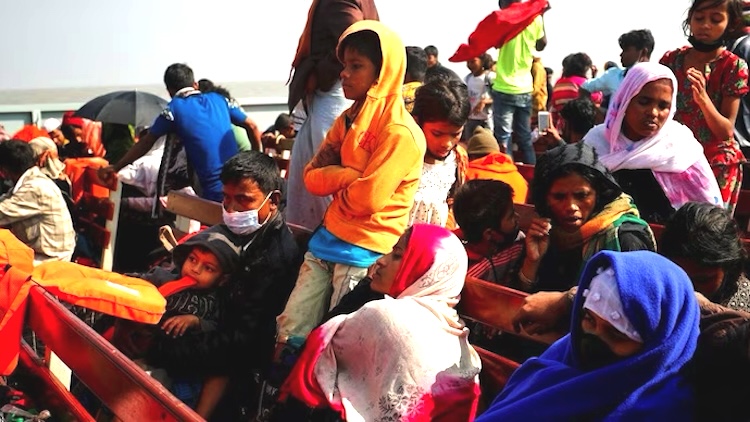Viewpoint by Kalinga Seneviratne
BANGKOK | 27 June 2023 (IDN) — Current geopolitical tensions in the Asian region — what China calls “outsiders interfering in the region to create conflict”— spreading to India’s Himalayan borders, threatening India’s and the region’s security.
The conflict in India’s north-eastern state of Manipur bordering Myanmar is already beginning to worry India’s security apparatus, and if and when the 89-year-old Dalai Lama pass away, it could create another border problem for India, with the recent high-powered US Congress delegation visit to Dalai Lama’s official residence Dharamsala in India giving a hint of things to come.

In a book published in 2019, ‘The Great Game in the Buddhist Himalayas: India and China’s Quest for Strategic Dominance’, former Indian diplomat Phunchok Stobdan warned of a brewing conflict in what he calls “Buddhist Himalayas”.
The region that encompasses the mountain ranges between Ladakh to Arunachal Pradesh has been a hotbed of border disputes between the two Asian giants. The June 2020 “fistfight” between Chinese and Indian soldiers resulting in deaths of 20 Indian soldiers has triggered Sinophobia in the Indian media spurred on by the West. It has seriously jeopardized relations between the two neighbours with the potential to destabilize the whole of Asia.
Stobdan warns that the Himalayan Mountain region that encompasses both India and China, and its neighbours Nepal and Bhutan could become a new geopolitical hotspot.
It could start with the battle to find the Dalai Lama’s reincarnation with his followers in both Dharamsala and the West, and the Chinese government disagreeing on the choice.
The US delegation led by the Republican chair of the US Congress Foreign Relations Committee, Michael McCaul and including former US House Speaker Nancy Pelosi met the Dalai Lama in Dharamsala on June 19, days after the US Congress passed the ‘Resolve Tibet Act’, which China says directly interferes in their domestic affairs.
Addressing a rare public meeting after the audience with the Tibetan spiritual leader, the Americans stated that the United States will not allow Beijing to interfere in the “succession” of the Dalai Lama.
“Our support for the Tibetan people is unwavering. Your dreams for better days remain alive. Beijing is relocating entire communities under the guise of development activities”, Representative Gregory Meeks told the gathering.
Just before the visit, the New York based Human Rights Watch released a report claiming that China is accelerating the forced urbanization of Tibetan villagers and herders, in an effort to “to assimilate rural Tibetans through control over their language and traditional Buddhist culture”
This reminded me about a visit I made to Dharamsala over a decade ago with a Professor from a Beijing University. After visiting the Tibetan history museum there, she came out visibly upset. During a lunch conversation, she said that when her husband was a Chinese government official in Lhasa for three years, she used to go there during university breaks to teach Mandarin to Tibetans.
“I never saw it as an attempt to undermine Tibetan language (as the museum suggests)” she told me. “I was seeing it as helping Tibetans to communicate better with the Chinese government”. She also added that she learned English many years ago, not because she wanted to ditch her Chinese identity, but “to communicate with the outside world”.
In December 2023, when I was in Bodhgaya in India when thousands of Tibetans gathered to listen to Buddhist sermons from the Dalai Lama, many older Tibetans in exile in India privately expressed views to me about their fears of outside forces instigating and funding a Tibetan “terrorist” movement on India’s border with Tibet to fight for Tibetan independence, exploiting frustrations of some young Tibetans on the lack of progress of Dalai Lama’s non-violent “middle path” approach to Tibetan autonomy short of independence.
One Indian diplomat told me recently, that if China could find a way for the Dalai Lama to be invited to visit China and Tibet before his death, that would be a “huge diplomatic coup for China and change Indian public opinion (about China)”. He said recently, India has granted visas for two Chinese government emissaries to visit Dharamsala.
What is happening in Manipur at the moment should indicate what could be in store for India, if China could not come to accommodation with the Dalai Lama. It could open up another terrorism front, this time in the north-western state of Ladakh, whose western flanks border Pakistan and Kashmir.
India is beginning to acknowledge that the arming of Myanmar rebel groups by “outsiders” to fight the Myanmar army is now triggering armed conflict in Manipur state that has killed 225 people since May 2023.
The Hindu newspaper reported on June 24 that unmanned aerial vehicles have been used in the conflict between the Meitei and Kuki communities in Manipur. Both these ethnic groups have roots in Myanmar whose people have formed rebel groups there. A police officer has said “this is the tip of the iceberg” with extremists in India equipping themselves “beyond the conventional guns and grenades”.
The Deccan Herald newspaper citing the National Investigation Agency said in May that weapons are filtering across the Myanmar border with hawala channels being used to transfer payments for smuggling of arms and ammunition by Myanmar-based networks into Manipur and Mizoram states. Hawala is an informal method of transferring money, based on trust, without any physical money actually moving.
India and Myanmar share a long-unfenced border and people have moved across this border freely for generations. Alarmed by the movement of refugees and “terrorists”, in February this year, Union Home Minister Amit Shah announced the suspension of the Free Movement Regime with Myanmar, and he added that the 1,643 km border would be fenced. [IDN-InDepthNews]
Photo: Infiltration of Rohingyas in India is largely due to the unfenced territorial border along India and Myanmar. Source: India Today.


